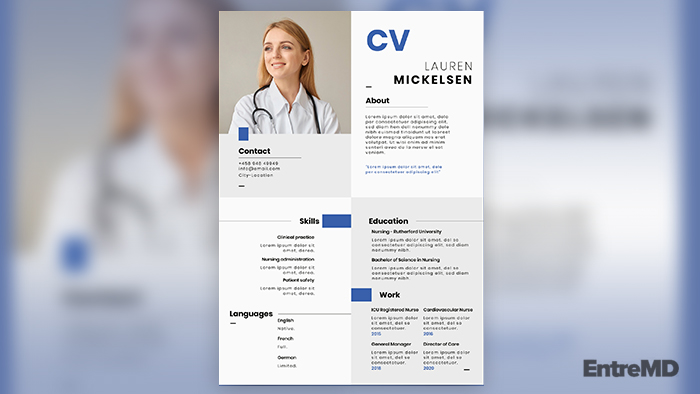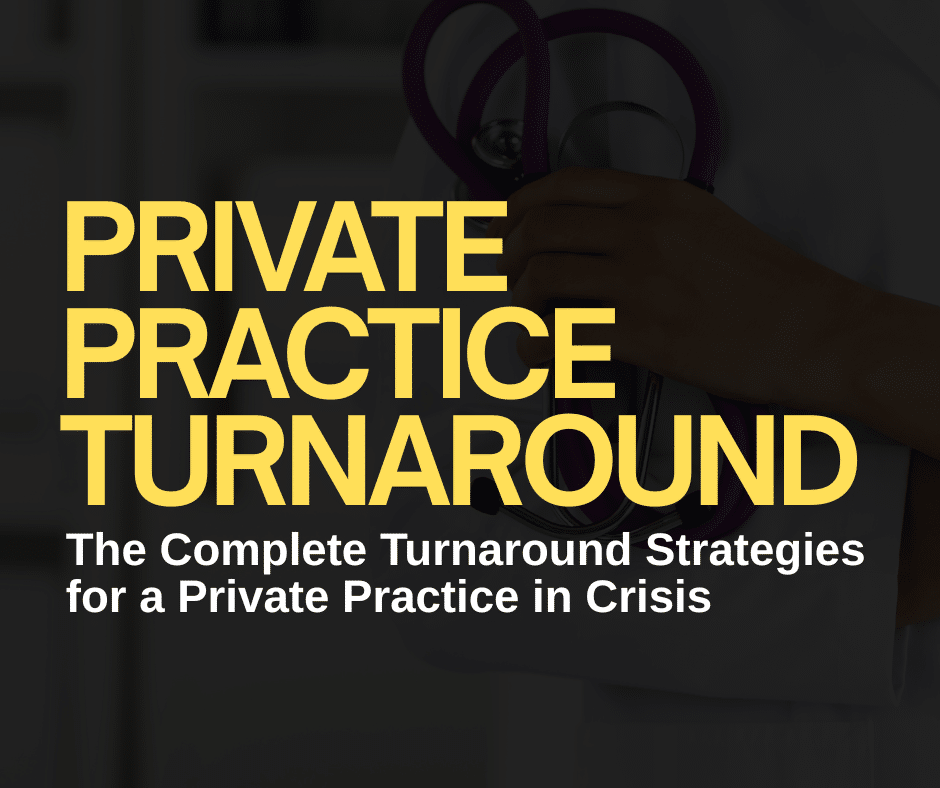When you send out your CV to potential employers, you’re utilizing a powerful tool that can quickly tell your story to recruiters. This is one of your key opportunities to stand out from the rest of the applicants in the pool.
Regardless of your career stage, you’ll want to make sure that your CV includes training, state licensure, current and previous practice experience, and board certification.
Beyond these must-haves, how else can you help your CV shine to give you the best possible chance of receiving a call from the hiring manager?
Let’s take a look at the steps you should take when writing a physician CV, in addition to some tips and tricks to keep in mind along the way.
Writing Your Physician CV: Step-By-Step
If you follow these steps to create your physician CV, you’ll end up with a finished product that you can send out to potential employers. Once your CV is current, it’s important to review it regularly and keep it up to date. Even when your job search is over, an up-to-date CV can be useful to your new employer for marketing materials and online bios.
1. Collect All Relevant Information
The first thing you’ll want to do when you’re writing your physician’s CV is to gather all of the information that could be relevant. Whether you haven’t submitted an application in some time or are applying for your first physician job, you will want to ensure that you collect everything you need to include and organize an effective CV.

For example, you might need to locate diplomas, transcripts, and certifications to ensure that important dates and other key info are accurate. It can sometimes be useful to take a look at CVs or resumes you’ve created in the past. In order to stay organized as you create your CV, consider using a digital filing system and a checklist.
2. Do Your Research
Though much of what is on your CV is going to detail your work experience, accomplishments, skills, and academic history, you still want to tailor your CV to the specific role you’re interested in. By researching the role you are applying for, you can ensure that your CV focuses on the most relevant qualifications and skills that you could bring to the job.

Take a close look at both the job description and your potential employer’s website. This can be very useful for determining which pieces of information to highlight in your CV as well as your language choice throughout the document.
3. Create Your Header
The header of your CV should contain your primary contact information. This includes:
- Your full name
- Your professional email address
- Your phone number
Is your professional email address connected with your current or previous job? If so, make a new email address that combines your first and last name.

Before you start sending out your CV, you’ll also want to check in with the voicemail recording saved on your phone. Does it sound professional, or is it something silly you recorded for the benefit of your friends? If your recording is anything but polished, straightforward, and professional sounding, you’ll want to make a new inbox recording.
This way, if a recruiter calls you and you don’t answer, they will get a great first impression of you. First impressions matter, so you want to make sure everything is set up to give you the best shot at coming off as the right person for the role.
4. Write a Professional Introduction
Underneath your header, you’ll want to write a two or three-sentence introduction that will give hiring managers a better sense of what you could bring to the position. This is a place where you can draw attention to your most impressive accomplishments, qualifications, and skills.

Whenever possible, try to incorporate numbers, stats, or facts that help back up the claims you’re making.
5. Highlight Your Work Experience
The next section will display your relevant work experience. List them with the most recent job at the top and then work backward in reverse chronological order.
You’ll want to list each job title along with the name of the organization, the dates of your employment, and the location. Under each job title, create a bullet-point list that gives an overview of the tasks you performed. In this section, you can also take the opportunity to point out any particular achievements that are related to each job.

When you’re writing your bullet point list, you’ll want to incorporate facts and figures as much as possible to quantify your statements. It’s also advised to use strong action verbs to pack more punch and help you stand out from the crowd of other applicants.
6. Dive Into Your Skills
Once you’ve gone through your employment history, it’s time to talk about any skills and qualifications that haven’t already come up on your CV. This can include a mix of hard skills and soft skills to help communicate that you’re a well-rounded medical professional.

There are a number of skills that hiring managers typically look for in particular when hiring physicians, including:
- Developing treatment plans
- Attention to detail
- Research skills
- Problem-solving
- Critical thinking
- Patience
- Empathy
7. Discuss Your Academic Career
Now, it’s time to highlight the degrees that you’ve earned. You’ll start with the highest level of education you’ve gone through and work backward. By putting your most advanced degree at the top, you’re ensuring that hiring managers will quickly be able to see your highest academic achievements right off the bat.

In this section, you’ll want to include the name of the degree, the name of the university or institution you received it from, and any relevant awards and honors.
8. Highlight Professional licenses, Awards, and Certifications
In the second to last section of your CV, you’ll want to note any professional licenses, awards, or certifications you’ve received. Next to each one, mark down the year they were obtained.

For licenses or certifications requiring ongoing maintenance, use the most recent renewal date on your CV.
9. List Professional Memberships
Finally, you’ll want to create a section at the end of your resume where you list any professional memberships you have. This can help hiring managers see that you are actively engaged in the medical community, working to develop your skills, and committed to providing the best possible care.

If applicable, you can highlight any publications or medical journals you regularly contribute to in this section.
Are you interested in creating passive or additional income as a physician? Make sure you take a look at my recent posts about the pros and cons of real estate investing for doctors, how to become a part-time medical-legal consultant, and places to apply as a physician keynote speaker.
Additional Tips For Writing a Physician CV
Now, let’s take a look at some extra tips and tricks you can use to help your CV set you apart from the crowd.
Take the Time to Make It Stand Out
Creating a CV might not be the world’s most exhilarating task, but giving it the attention it deserves is important. It’s worth investing time into your CV to make sure it fully represents you and your skills.

Don’t undervalue your CV– it is a document that can be sent out to potential employers and speak for you on your behalf. You want to keep your CV updated as well to ensure it can be easily accessed whenever you need it.
Make Sure You Explain Any Employment Gaps
Your CV can help recruiters and hiring managers get an initial impression of you. One of the things that can put a big question mark in their mind is employment gaps. While it can be tempting to hope that they don’t notice the empty space where you don’t list any employment, it’s usually best to be clear about why there’s an employment gap on your resume.
There are many legitimate reasons why a person might have spent some time away from work. For example, maybe they were traveling while doing medical volunteer work or needed to spend time caring for an ill family member.

It is typically better to explain gaps rather than not address the issue. You can choose to discuss employment gaps in your cover letter, on your CV, or during your interview. It’s important to be forthcoming and honest about these gaps rather than going out of your way to try to hide them.
Be Attentive to the Details
While your CV provides an overview of your career, qualifications, skills, and experience, it’s still important to be very attentive to the details. You’ll want to include the month and year for the items you’re listing on your CV. Beyond that, you’ll want to make sure that nothing is misspelled, everything is grammatically correct, and there aren’t any typos.

You should even be considerate of which software you use to create your CV. Sometimes, using Google Docs and Mac file formats won’t open properly, depending on the system being used by your prospective employer. Using Microsoft Word can help you avoid this potential problem.
Alternatively, you can also save your CV as a PDF when it’s completed. This can ensure there aren’t any issues for hiring managers opening the document on the other end. For many online applications, PDFs are the preferred file format for CVs and resumes.
Consider the Length
You’ll usually hear that the standard length for a CV is three to four pages. However, the length of the CV is going to relate to how many different positions a particular physician has held over the years and how long they have been practicing.
Individuals with highly academic careers will sometimes list all of the papers they’ve published. This can end up leading to a document that is thirty pages or longer. If your list of publications is extensive and you want to include them, it can be a good idea to create two versions– one condensed CV and one expanded CV.

In general, academic CVs tend to be longer than clinical CVs. This is because they’ll include speaking engagements, publication history, and other information. A physician looking for a clinical position coming out of training will want to keep their CV to three pages or less. In general, shorter is better to ensure that hiring managers are able to skim the document quickly and get a sense of whether you could be a good candidate.
Steer Clear of Fluff
When you’re creating your CV, it can be tempting to try to show potential employers as much as possible about yourself so they can get a full picture. The truth is, the key to writing a successful CV isn’t just knowing what to include; it’s also about what to leave out.

Any jobs you’ve held that aren’t related to the job you’re applying for right now don’t need to be included. Working at a restaurant in college simply isn’t relevant to your current job search.
Beyond that, you don’t need to include personal information or hobbies. You’ll sometimes hear recommendations to include a bit about your personal interests on your resume, but many experts suggest steering clear of this type of content on a physician CV.
Keep Your Template Simple
There are a lot of different CV templates out there you can use, but it’s really best to keep things simple. Stick with classic black and white, and don’t try to get too creative with the layout or design.

When it comes to a CV, clear and basic is best. You want hiring managers to be able to find the information they’re looking for quickly and easily without having to scan a visual maze to get there.
Another important consideration is including enough white space so your CV is easy to read. Make sure you’re using a consistent design that helps the reader quickly move through the document, with clear headings in the same font and size and clearly defined sections.
Carefully Proofread
You’ll want to read your CV a few times before finalizing it. Printing out your CV and sitting down with a red pen can be a much more effective way to proofread it than going over it on your computer screen.

This is your opportunity to check for any errors, formatting issues, typos, or omissions.
Ask For Help
As you likely know, it can be hard for us to edit our own work. The same is true when it comes to CVs.

After proofreading your CV, consider handing it over to someone you trust. They can then review it and let you know if they find any errors while offering honest feedback.
Creating a Highly Profitable Business as a Physician
Are you tired of searching for jobs and dealing with the lack of freedom that comes with being an employee? At EntreMD, we help physicians create six and seven-figure businesses so they can live and work on their own terms. Whether you’re planning on starting a business or already have your own practice, we’re here to help you grow your business and create multiple income streams.

Ready to take back control of your life and your time? If so, learn more about working with me today.

